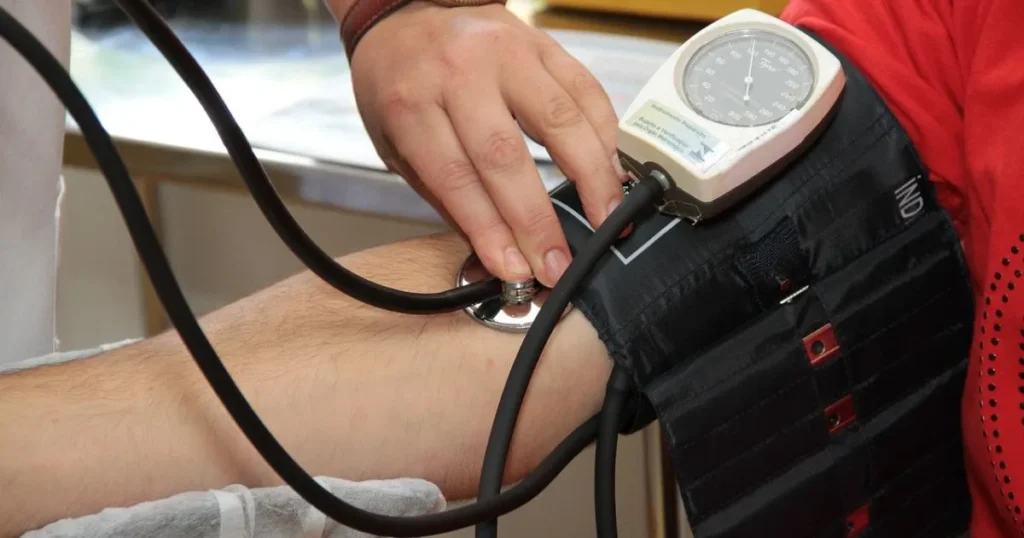When planning your dream trip to Europe, there are countless details to consider: the perfect itinerary, must-see attractions, and delicious local cuisine. But one essential aspect that often gets overlooked is Europe travel insurance. This protective measure can make all the difference in ensuring your adventure is as smooth and enjoyable as possible. With the right insurance plan in place, you can embark on your journey with confidence, knowing that you’re covered against unexpected mishaps.
Table of Contents
Why You Need Travel Insurance for Europe
Exploring Europe is an exciting journey brimming with breathtaking scenery, a deep historical legacy, and lively cultures. Still, even the most meticulously organized plans can fall apart. Whether it’s a sudden illness, a flight cancellation, or lost luggage, the unpredictability of travel can create stress and financial strain. Here are a few reasons why securing travel insurance should be a priority:
Protection Against Medical Emergencies
Imagine exploring the charming streets of Paris and suddenly falling ill. Without proper medical coverage, a simple doctor’s visit could lead to hefty out-of-pocket expenses. In several European nations, the cost of healthcare can be exceptionally high for uninsured travelers. With Europe travel insurance, you can receive the medical attention you need without worrying about financial repercussions.
Trip Cancellation and Interruption
Life happens, and sometimes plans change. If you need to cancel or interrupt your trip due to unforeseen circumstances, having travel insurance can help you recover your non-refundable expenses. This can include flights, hotel bookings, and tour reservations, protecting your investment and allowing you to rebook your dream getaway later.
Lost or Stolen Property
Theft or loss of belongings can dampen your travel experience. Travel insurance often covers lost or stolen items, providing you with peace of mind. If your suitcase goes missing or your phone is stolen, you won’t have to face the financial burden alone.
Emergency Evacuation Coverage
In the unfortunate event of a medical emergency that requires immediate evacuation, having insurance can be a lifesaver. Emergency evacuations can cost thousands of dollars, and most regular health insurance plans do not cover these expenses abroad. Travel insurance ensures that you can receive necessary medical assistance and transport without financial stress.

Types of Coverage in Europe Travel Insurance
When planning your European adventure, understanding the key types of travel insurance coverage is crucial to safeguarding your trip and ensuring peace of mind. Below is an in-depth look at the essential coverage options and their benefits:
Medical Coverage
- Importance:
Medical emergencies can happen unexpectedly, from sudden illnesses to accidental injuries. Without proper insurance, accessing quality healthcare in a foreign country could drain your travel budget. Comprehensive medical coverage not only ensures access to prompt and effective treatment but also eliminates financial stress during emergencies. - Average Costs:
Medical expenses in Europe can be steep. For example:- A simple doctor’s consultation may cost $50–$300 depending on the country.
- A night in a hospital can range from $300–$1,000 in public facilities, while private hospitals charge significantly more.
- Emergency surgeries or critical care treatments could cost tens of thousands of dollars.
Having medical coverage ensures these expenses are handled, letting you focus on recovery instead of worrying about bills.
- Additional Features:
Some policies include benefits like direct billing, eliminating the need to pay upfront, and coverage for pre-existing conditions if disclosed in advance.
Trip Cancellation and Interruption Insurance
- Scenarios:
Imagine booking a dream vacation with non-refundable flights and accommodations, only to have to cancel due to:- A personal emergency, such as illness or injury to you or a family member.
- External disruptions like airline strikes, severe weather, or political unrest.
- Financial instability, such as sudden job loss before the trip.
Trip cancellation insurance provides a financial safety net, ensuring these unforeseen events don’t turn into significant monetary losses.
- Financial Implications:
Most policies cover up to 100% of pre-paid, non-refundable expenses. For example:- If your $3,000 trip is canceled due to a covered event, you can recover the full amount.
- If you’re forced to cut your trip short, interruption coverage reimburses unused portions of your bookings, like hotel stays or tours, as well as the cost of return flights.

Lost or Stolen Property Coverage
- Steps to Take:
The loss of luggage or theft of personal items can ruin any trip. Here’s how this coverage helps:- File a police report and notify the airline or transit service if the loss occurs during travel.
- Provide documentation, such as receipts or photographs, to your insurer to process claims.
- Receive compensation for the lost or stolen items, based on their current value or replacement cost.
- Role of Insurance:
From misplaced luggage during transit to stolen electronics or wallets, this coverage ensures you’re not left stranded or financially burdened. Common items covered include:
- Luggage, clothing, and accessories.
- Electronics like cameras, laptops, and smartphones.
- Important documents like passports or travel visas.
Many policies also include emergency funds to help you replace stolen essentials during your trip.
Emergency Evacuation Coverage
- What It Entails:
Coverage for emergency evacuation is essential for travelers heading to remote areas or participating in activities with higher risks. It covers:- Transport to the nearest qualified medical facility.
- Air ambulance services if necessary.
- Repatriation to your home country for continued care.
- Necessity:
Consider the following scenarios:- You’re hiking in the Swiss Alps and suffer a severe injury requiring helicopter rescue.
- You fall ill in a rural area of Eastern Europe where adequate medical care is unavailable locally.
In these cases, the costs of evacuation can exceed $20,000. This coverage ensures you’re transported safely without financial worry.
- Additional Perks:
Some premium plans also include non-medical evacuation, such as emergency transport during natural disasters, political unrest, or other life-threatening situations.
Personal Liability Coverage
- What It Covers:
Personal liability insurance protects you financially if you’re held responsible for accidental damage or injury to someone else while traveling. Examples include:- Damaging property in a hotel or vacation rental.
- Accidentally injuring someone during activities like cycling or skiing.
- Why It’s Important:
In countries with strict legal systems or high compensation requirements, personal liability coverage can save you from hefty legal fees or damages, which can range from hundreds to thousands of dollars.
Travel Delay Coverage
- Purpose:
Travel delays are common due to weather conditions, technical issues, or unexpected disruptions. This coverage ensures you’re reimbursed for additional expenses caused by significant delays, such as:- Accommodation and meals during an extended layover.
- Rebooking fees for missed connections.
- Example:
If your flight from Paris to Rome is delayed for 12 hours, travel delay coverage can compensate you for hotel stays and meals during the wait.
Rental Car Insurance
- When It’s Needed:
If you plan to rent a car during your trip, rental car insurance provides protection against:- Damages to the rental vehicle due to accidents or theft.
- Liability for injuries or damages caused to third parties while driving.
- Savings Tip:
Check if your travel insurance includes this coverage, as rental agencies often charge high daily rates for similar protection.
With these coverage options in mind, you can confidently choose a Europe travel insurance plan that fits your needs and ensures a worry-free adventure. Always review the policy details to understand the coverage limits, exclusions, and any extra benefits provided.

Factors to Consider When Choosing Travel Insurance
Finding the right travel insurance plan for your European adventure involves evaluating several key factors. Properly understanding these elements will ensure that your trip is stress-free and protected from unexpected events. Below are the essential factors to keep in mind:
Coverage Limits
- Significance: Each travel insurance policy specifies coverage limits, which indicate the maximum amount the insurer will pay for various incidents such as medical emergencies, lost luggage, or trip cancellations.
- What to Check:
- Medical Expenses: Ensure the policy provides adequate coverage for medical treatments, especially if you’re traveling to countries with high healthcare costs.
- Trip Interruptions: Verify that the plan covers trip cancellations or delays to recover any prepaid, non-refundable expenses.
- Luggage and Personal Belongings: Check the limits for lost, damaged, or stolen items, particularly if you’re carrying expensive electronics or valuables.
Exclusions
- Common Exclusions: Travel insurance policies often exclude coverage for certain conditions or activities. These exclusions could include:
- Pre-existing medical conditions.
- High-risk activities like extreme sports, unless specifically added to the policy.
- Traveling to regions with active government travel advisories.
- How to Handle: Always examine the fine print to understand what is excluded from coverage. If your trip involves activities like skiing or scuba diving, look for add-ons or specialized plans to ensure complete protection.
Deductibles and Premiums
- How They Affect Costs:
- Deductibles: This is the amount you pay out of pocket before the insurance coverage applies. For instance, if your deductible is $200 and your claim is $500, you’ll pay the first $200, and the insurer will cover the remaining $300.
- Premiums: Higher premiums usually mean more comprehensive coverage and lower deductibles, while lower premiums may require higher deductibles and limit the scope of coverage.
- Budget Considerations: Balance the deductible and premium according to your travel needs and budget. For instance, frequent travelers might opt for higher premiums to ensure better coverage for regular trips, while occasional travelers might prioritize affordability.
Reviews and Ratings
- Provider Reputation: The reputation of the insurance provider is crucial to ensure smooth claims processing and reliable support.
- Read customer reviews to understand the experiences of other policyholders, especially concerning claims handling and customer service.
- Check the provider’s financial stability and accreditation, ensuring they can meet claims obligations.
- Online Resources: Platforms like Trustpilot, Better Business Bureau, or dedicated insurance comparison websites can provide detailed insights into the provider’s reliability and service quality.
Additional Tips for Choosing the Right Travel Insurance
- 24/7 Assistance: Ensure the provider offers round-the-clock customer support in case of emergencies while traveling.
- Customization Options: Look for policies that allow you to add coverage tailored to your unique travel needs, such as adventure sports or business equipment protection.
- Ease of Claims Process: Choose a provider with a straightforward and transparent claims process to avoid unnecessary delays.
By carefully evaluating these factors, you can confidently select a travel insurance plan that aligns with your itinerary, activities, and budget, ensuring peace of mind throughout your European adventure.

How to Find Affordable Europe Travel Insurance Plans
Finding affordable travel insurance for your European trip can be straightforward if you take the right approach. Below are practical strategies to help you secure a comprehensive plan that fits your budget.
1. Compare Multiple Providers
To find the best value, it’s essential to compare travel insurance options from different providers. Not all insurers offer the same benefits for the same price, so using comparison websites like InsureMyTrip or SquareMouth can help you evaluate policies side by side. These tools allow you to filter options by coverage type, price, and customer reviews, ensuring that you find a plan tailored to your needs. Pay close attention to hidden fees or restrictions that might increase costs. Additionally, focus on providers specializing in European travel insurance, as they may offer plans with region-specific benefits.
2. Look for Discounts and Offers
Many insurance providers offer discounts that can significantly lower the cost of your plan. Students often receive reduced rates, making student-specific travel insurance a great option for young travelers. Families or groups traveling together can benefit from group policies, which provide discounts per person. Similarly, membership in professional organizations, alumni networks, or unions can qualify you for exclusive deals. To maximize savings, sign up for newsletters from major providers to stay updated on seasonal promotions and inquire about early booking discounts when planning your trip well in advance.
3. Read the Fine Print
Understanding the terms and conditions of your travel insurance policy is crucial to avoid surprises later. Carefully review the coverage scope to ensure it includes essentials like medical emergencies, trip cancellations, and lost luggage. Pay close attention to exclusions, such as pre-existing conditions or high-risk activities, which may not be covered unless you purchase additional riders. It’s equally important to understand the reimbursement process to avoid delays when filing claims. If any terms seem unclear, don’t hesitate to contact the provider for clarification before purchasing the policy.
4. Consider Bundling Insurance
Bundling insurance policies can be a cost-effective way to save on travel insurance. If you already have auto, home, or health insurance, check if your provider offers travel insurance as an add-on. Many companies provide discounts for customers who combine multiple policies under one account. Bundling not only reduces costs but also simplifies policy management, allowing you to handle all your insurance needs with one provider. Be sure to compare the bundled costs with standalone travel insurance to confirm you’re getting the best deal.
5. Opt for Annual Multi-Trip Insurance Plans
If you plan to visit Europe multiple times in a year, an annual multi-trip insurance plan can save you money compared to purchasing separate policies for each trip. These plans are designed to cover all your trips within a 12-month period, often with limits on the duration of each trip. They are ideal for frequent travelers, business trips, or families with multiple vacations planned. By investing in an annual plan, you’ll not only save money but also eliminate the hassle of purchasing new coverage for every trip.
6. Adjust Coverage to Fit Your Needs
Customizing your travel insurance plan is an effective way to avoid overpaying for unnecessary coverage. If you’re traveling light, choose a policy with minimal personal belongings coverage. Similarly, if your itinerary is straightforward, a basic plan focusing on medical emergencies may suffice. Avoid over-insuring by skipping high-risk activity coverage if your trip doesn’t involve adventurous activities. Tailoring your plan ensures you only pay for the protection you genuinely need.
7. Leverage Travel Credit Card Benefits
Many travel credit cards include complimentary travel insurance, which can help reduce costs. These benefits often cover trip cancellations, baggage delays, and emergency medical assistance. Before relying on your credit card insurance, review the coverage limits and terms to ensure they meet your needs. If the included coverage is insufficient, consider supplementing it with a standalone travel insurance policy for complete peace of mind.
By combining these strategies, you can find an affordable travel insurance plan that balances cost with comprehensive coverage. Whether it’s comparing providers, leveraging discounts, or customizing your plan, a little effort in planning can help you secure the best protection for your European adventure.
Frequently Asked Questions (FAQ)
What does Europe travel insurance typically cover?
Travel insurance usually covers medical emergencies, trip cancellations, lost or stolen property, and emergency evacuations. Always check your policy for specific inclusions and exclusions.
How much does Europe travel insurance cost?
The expense of travel insurance differs according to various factors, such as your age, the duration of your journey, your destination, and the extent of coverage you select. Typically, travelers should anticipate spending around 4-10% of their overall trip expenses.
Is travel insurance necessary for short trips?
While it may seem unnecessary for short trips, unexpected events can still occur. Travel insurance provides peace of mind and financial protection, making it a worthwhile investment for any duration.
Am I able to buy insurance once my trip has begun?
In most cases, you cannot purchase travel insurance after your trip has begun. It’s essential to secure coverage before leaving for your trip to ensure you’re protected from the start.
Conclusion: Travel with Peace of Mind
As you prepare for your exciting European adventure, don’t overlook the importance of securing affordable Europe travel insurance. This investment provides essential protection against unforeseen events, allowing you to enjoy your travels with confidence. With the right coverage in place, you can focus on creating unforgettable memories, from sipping espresso in Rome to exploring the breathtaking fjords of Norway.
Don’t wait until it’s too late—start your search for the perfect travel insurance plan today! By comparing options, understanding your needs, and making informed decisions, you can find the coverage that best suits your journey. Travel smart, travel safe, and embark on your European adventure fully prepared for whatever comes your way.

